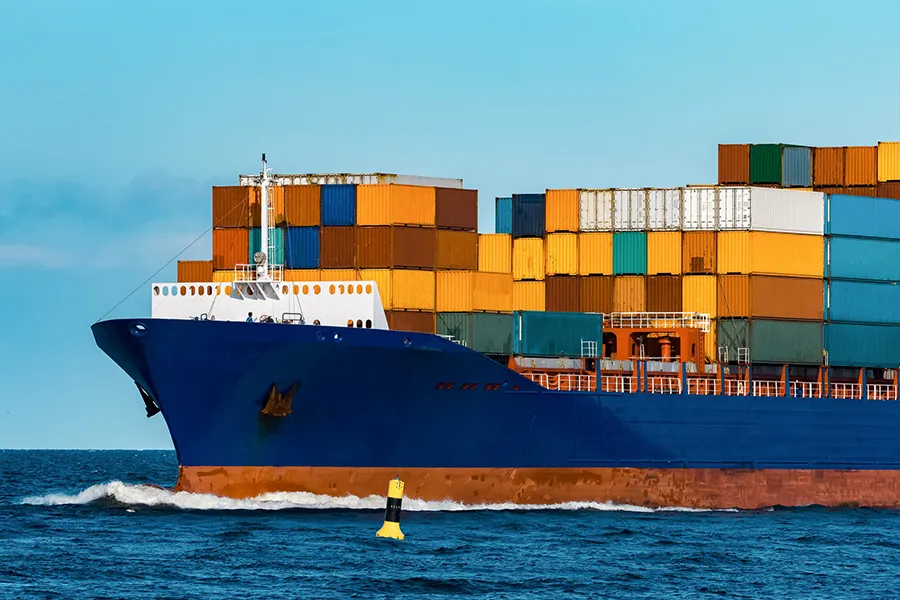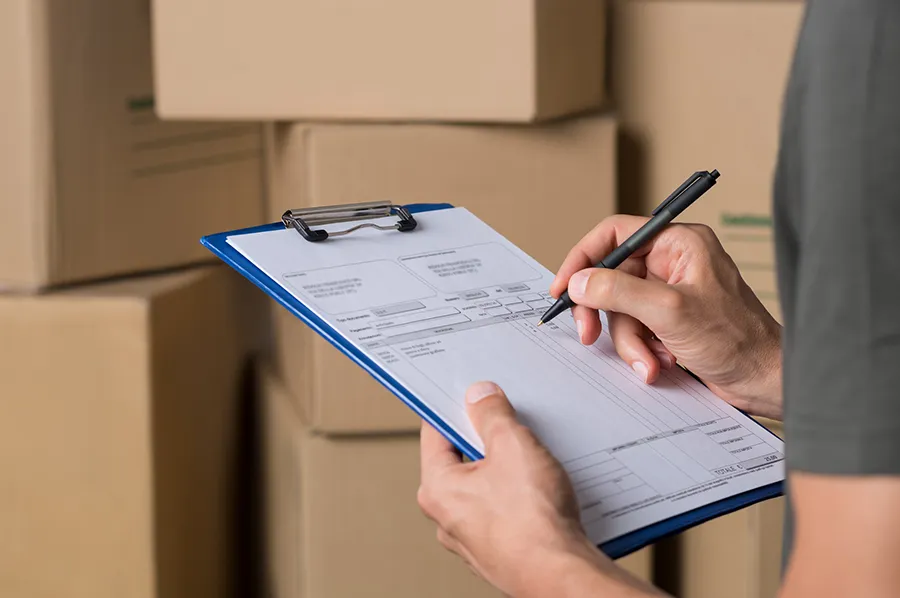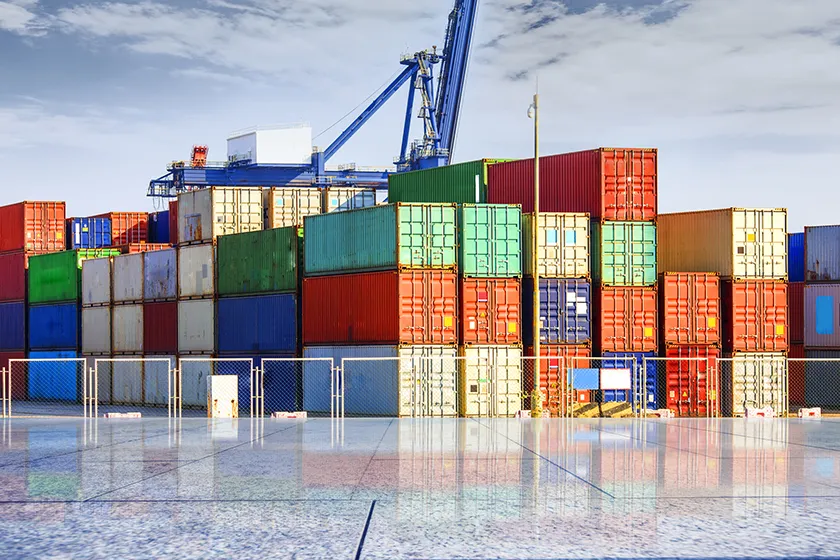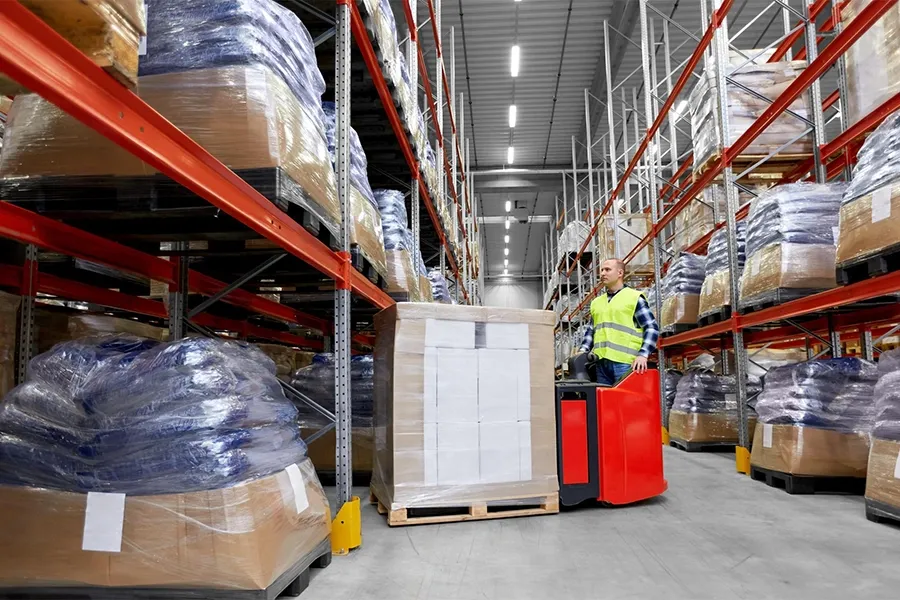What is customs brokerage?
A customs broker is an individual or company that, with a valid license from the customs, acts as a representative of importers and exporters and is responsible for carrying out all legal and administrative procedures related to the clearance of goods. With full knowledge of customs laws and regulations, a customs broker helps traders and owners of goods to clear their goods quickly and without problems from customs. In this article, we will examine the role, duties and benefits of using customs broker services, as well as how to calculate customs brokerage fees.

Who is a customs broker?
A customs broker is a person or company that represents importers and exporters in customs matters and is approved by the customs organization by having a special license from the customs for clearance of goods. It is responsible for following up and carrying out all legal and administrative procedures related to customs clearance. Due to its complete knowledge of customs laws and regulations, the broker plays an important role in preventing problems and delays in the process of clearing goods. One of the most important duties of a customs broker is to provide advice to traders and companies on how to carry out the clearance process. With up-to-date knowledge of laws, tariffs, customs exemptions and other regulations, these consultants can help importers and exporters clear their goods from customs without legal and financial problems.
In addition, the customs broker must prepare all the necessary documents for clearance and send them to customs. These documents include invoices, bills of lading, certificates of origin, health and standard permits, and other required documents.
In fact, a customs broker acts as a bridge between customers and various customs offices and, by complying with the rules, prevents legal, financial, and administrative problems. Due to their specialized knowledge and experience in customs matters, these individuals or companies allow traders to import or export their goods easily and without worrying about possible problems.
What is groupage?
Groupage transportation is one of the most efficient and cost-effective methods for shipping small and tiny goods, in which several shipments from different senders are sent in a common shipment to a specific destination. This method is especially suitable for small and commercial businesses that need to transport small and light loads. Given the various advantages of groupage, such as reducing costs, saving time and lower costs, groupage is widely used in international transportation and long routes. In this article, while examining the appropriate packaging methods in groupage, the importance of this process in maintaining the health and safety of goods is discussed.
Groupage in transportation
Groupage or small cargo is a convenient and cost-effective method for sending small and small-volume goods, in which different goods from several different senders or companies are collected in a common shipment and sent to a single destination. This method is especially useful in international transportation or on long routes with high transportation costs. In groupage, several small shipments are placed in a container as a group and is quite economical because it divides the cost required to rent a full container.
Benefits of using groupage transportation (shared cargo transportation)
In groupage transportation, as the best method of sending small goods or goods with small volumes, transportation costs will be divided between all senders. This feature allows small and medium-sized businesses or companies that have regular transportation with small and small volumes to benefit from international transportation services at lower costs. In addition, groupage transportation brings numerous other benefits to individuals or commercial companies, some of which we have mentioned below:
- Reduction in transportation costs
- Saving time
- Possibility of sending different goods with different dimensions and weights
- Complete security and monitoring
- Reduction in packaging costs
- Possibility of group insurance
- Reduction in the risk of loss or damage to goods
Limitations and Disadvantages of Groupage
Groupage transportation or small-load transportation is known as an economical and cost-effective method of shipping goods, but like any other transportation method, it has its own rules and limitations. These limitations affect the choice of this method, especially for goods that require special conditions for storage or movement. Here are some of the disadvantages and limitations of groupage:
- Delay in delivery time
- Limitations on the volume and weight of goods
- More complicated process of tracking the shipment
- Limitations on sending certain goods
- Shipping dangerous goods, smuggled goods, or illegal goods, etc.
Under what conditions is groupage transportation carried out?
Groupage is used for small loads or group transportation of small and low-volume goods that are not the size of a container and the remaining empty space in the container can be used for other goods with similar or similar purposes. Groupage transportation of cargo has a high impact on reducing costs and the transportation cost is divided in proportion to the amount of space occupied or the weight of each customer’s cargo. Therefore, you no longer need to pay the full cost of renting a container.
Groupage transportation is used in cases where there is no need for immediate delivery of cargo. Because the delivery time of these cargoes may take a little longer than transporting dedicated cargoes. Groupage transportation is also not suitable for cargoes that require special care or services such as light sensitivity, controlled temperature, etc., or special permits from various organizations for transportation, because they cannot be easily placed in a container with other cargoes.
Personal small cargo, such as goods and merchandise purchased from international online stores, are also suitable for groupage transportation.
Which goods are suitable for groupage?
Despite its various advantages, groupage is not suitable for all goods and in this regard has some limitations. Groupage is suitable for sending goods that do not require special conditions for transportation, storage or immediate delivery. In fact, goods sent by groupage method must have the necessary characteristics and conditions for joint transportation with other shipments. Below, we will examine some of the goods that are suitable for groupage:
- General goods that do not require care or special conditions during transportation, such as simple household appliances, clothing, furniture, spare parts for machinery, etc.
- Small and light goods such as small electronics, books, documents, small industrial parts, cosmetics and hygiene products, etc.
- Food or non-perishable products
- Goods that are not sensitive to temperature and humidity.
- Goods that do not require immediate delivery.
- Exhibition goods
- Goods that are temporarily imported
- Small volume and low-cost purchases
- Commercial samples of goods
- Transport-sensitive devices
- Personal consumption goods
- Exhibition goods between two different countries
- Samples of commercial products from several different companies
- Goods purchased from shopping websites in different countries
In general, goods that are much smaller than the volume of a truck or container are transported as groupage. It is also important to note that goods that require special permits for import cannot be transported as groupage.
Bills of lading required for groupage transportation
For the transportation of small cargo and the use of groupage in transportation, a set of specific documents and bills of lading is required, which may vary depending on the type of goods, destination and type of transportation. The most important bills of lading and documentation required for this type of transportation are:

Master bill of lading:
The master bill of lading is actually a contract between the forwarder and the sender for the shipment of goods, which is issued by the transportation company. This bill of lading includes information such as the name of the sender, recipient, type of goods, weight, dimensions of the goods, origin and destination, etc., and is a permit to transport the goods.
Groupage bill of lading
A groupage bill of lading is issued when several goods are collected in a shipment and sent jointly to a destination. This bill of lading is used as an official permit to transport and transfer goods that are in a groupage.
Air Waybill:
For the transportation of small cargo by air, an air waybill is issued, which contains detailed information about the weight, dimensions, destination, and recipient of the goods.
Bill of Lading:
In maritime transportation, a bill of lading is used for transporting groupage and small cargo. This bill of lading contains information about the vessel, route, date of discharge, and specifications of the goods and is considered a document of ownership for the transfer of goods.
Commercial Invoice:
This invoice contains financial and commercial information related to the goods being transported. The commercial invoice is necessary to calculate customs fees and other costs associated with groupage transportation.
Packing List:
This list contains more detailed details of the various packaging of goods and is used to verify the contents of the cargo in the groupage.
Certificate of Origin:
A certificate of origin is issued by the Chamber of Commerce, Consulate, or Embassy of the country of origin or the country of production of the goods and serves as evidence to prove the country of origin of the goods.
Given the complexities of the process of transporting small cargo and groupage, attention to detail and accuracy in preparing bills of lading and legal documentation is very important. Using these bills of lading not only facilitates the transportation process, but also prevents potential problems at customs or during delivery of the goods.
What is the best method for groupage packaging?
In groupage and sending shipments as small loads, packaging is of great importance and can have a great impact on the health and safety of the goods. Proper and principled groupage packaging can help reduce costs, prevent possible damage, and facilitate the transportation process. To effectively package this type of cargo, you should keep a few points in mind:
- Choosing the right packaging: Depending on the type of goods, you should use resistant boxes or covers that will not be damaged by factors such as impact, moisture, etc. For fragile goods, shock-absorbing materials such as foam or bubble wrap can be used.
- Using clear and distinct labels: Labels with accurate information such as destination, sender’s address, package contents, and necessary warnings about the contents of the package facilitate the transportation and delivery process of goods.
- Proper arrangement: In groupage, the correct arrangement of loads inside the vehicle is very important. The packaging space should be managed in such a way that none of the goods are moved or damaged during transportation.
- Use of moisture-proof and dust-proof materials: Especially for goods that are sensitive to moisture, waterproof materials or protective coatings should be used to prevent damage to the goods.
- Weight and volume arrangement: Paying attention to the proper distribution of weight and volume in the packaging can prevent damage to the goods and make the transportation process easier. Heavy goods should be placed at the bottom and lighter goods on top.
- Use of pallets or additional supports: To prevent the movement of goods and also facilitate transportation, pallets or other fixed supports can be used to place the goods. This both provides greater safety for the goods and simplifies the loading and unloading process.
It can be said that the best way to package groupage goods is to use wooden boxes, which, in addition to being safe and resistant to pressure and easy to move, do not harm the environment and are recyclable and reusable
Groupage Transportation FAQ
What types of cargo are suitable for groupage transportation?
Groupage transportation is more suitable for goods with medium volume and weight that do not require fast shipping. Goods such as household appliances, industrial products, or commercial items are usually good options for this type of transportation.
Is it possible to track the status of the cargo in groupage transportation?
Reputable groupage transportation companies such as Saina Express have online systems to track the status of the cargo and you can easily track the status of your cargo using the tracking code.
How is the cost of groupage transportation calculated?
The cost of groupage transportation is calculated depending on the type of goods and transportation conditions based on factors such as weight or volume of the cargo, number of packages or the amount of space occupied, as well as the distance to the destination.
Is insurance provided for cargo in groupage transportation?
Yes, this insurance is group and includes coverage against possible damage along the way or during unloading.
Is there a limit on the size or weight of cargo in groupage transportation?
Yes, groupage transportation services cannot be used for loads and shipments that are too heavy or bulky or require special permits.
Summary
Groupage transportation is used as a cost-effective solution for sending small loads and small goods. This method is a good choice for those who need to send a variety of goods to different destinations due to its lower costs and optimal use of space. However, to use this method optimally, we must pay special attention to points such as the type of goods, the required bills of lading and the delivery time. The use of groupage services is widely used in international transportation, especially in situations where immediate delivery is not important and the goods do not require special conditions for transportation and storage.


